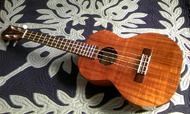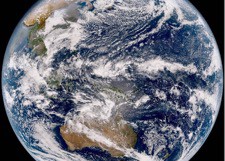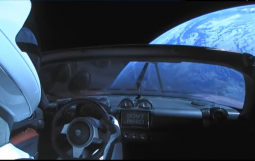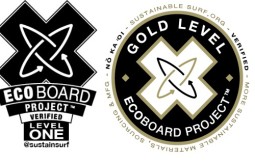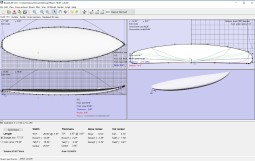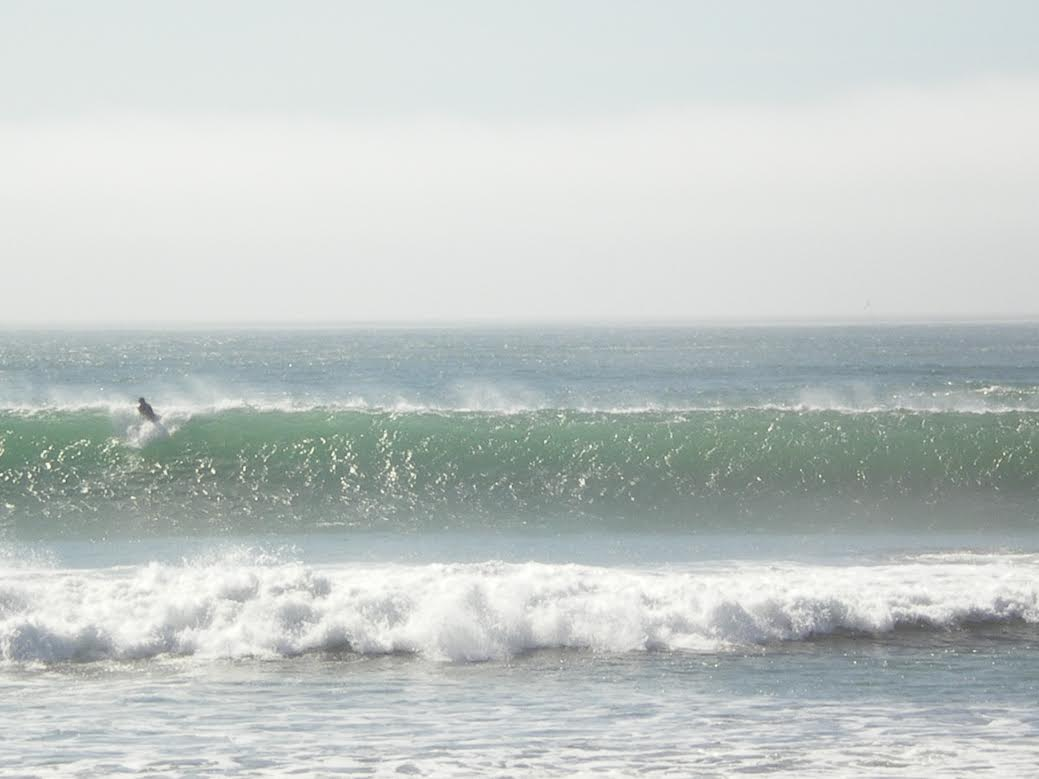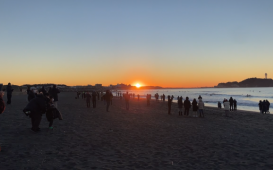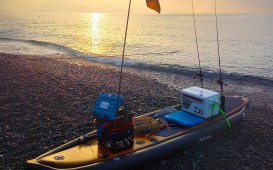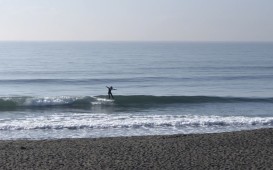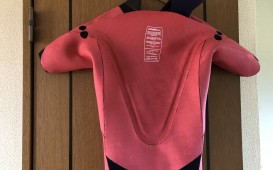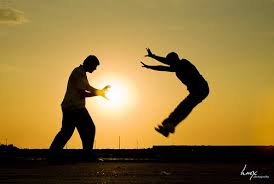
やぁ元気にしてる?本当に寒くなってきて、僕はなるべくぎりぎりまでウェットを着ないで頑張るんだけど、さすがにウェットスーツなしではもう無理だよね。
今年の夏は、始めのほうに台風がどっと来て、その後しばらく何もなくて、終わりにまたスウェルが戻ってきた。それで、最近『なんでスウェルって何個かの波のグループになってまとまって届くの?』と聞かれることが何度かあったので、このウラナミでその説明をさせてもらうね。
ハワイのサウスショアにはニュージーランドからグランドスウェルが届き、ノースショアにはアリューシャンから届く。ハワイの予報士はこのスウェルについての予測をメインにするんだけど、日本に届く多くの波は風波に分類されるよ。
子供の頃は、ただ、波来る感じがする~と言い合っていたのが、大学生に入ると自然の動きを式で表せることを知った。それから僕は科学計算に興味を持ち始めて、大学を出た後ラッキーなことに、伝説的なビッグウェーバーでもある Ricky Grigg先生から波の予報について少し教えてもらう機会があった。彼は、僕に波浪予測について教える代わりに、彼が必要なプログラミングについて簡単に教えてほしいと提案してきたんだよ。これをきっかけに、僕が今力を注いでいるコンピューターによる天気や波のシミュレーションをすることになったんだ。
彼は僕にたくさんのことを教えてくれて、その中で一番印象に残っているのは、ニュージーランドからオアフ島の南側の海岸にスウェルが届くのに大体7日かかり、アリューシャン付近のストームからオアフ島の北側の海岸にスウェルが届くのには約3日かかるってこと。その頃、この情報を得る方法といえば、その周辺の船による風の観測情報を見ることで、明日どんな波になるのか知りたいときには6日前のアリューシャン付近の観測データを見ていたんだ。
次に彼が僕に教えてくれたことは、波を作る3つの要因となる、1.風速、2.フェッチ(距離)、3.期間ついて。つまり、どのくらいの強さの風が、どのくらい長い距離を、どのくらいの時間吹いていたかという事。科学者は、これらの関係を研究してきているんだ。
それにもう1つ、波はどうやって始まって伝わってくるのかという事。これが、僕がよく聞かれるっていう質問についての答えになるんだ。
深い海では、波が発生地から移動するにつれて、波は波列として連続した群になって、全方位に広がりながら一番大きい波は風が吹いていた方向へ移動する。発生地から遠ざかるにつれ、同じスピードの波がグループになって一緒に移動するようになるんだ。このグループが、僕らがよくいう『セット』ってやつだよ。波の進む速さは、波の周期というのから計算できて、その速さは波の周期が長くなるにつれて速くなる。移動距離が長くなればなるほど、このグループの間隔が遠くなる。だから、セットの間にはフラットな時があって、フラットの時間が長ければ、より遠くから波が来ているということになるんだ。
ここで、その波のグループたちが一緒に移動すると面白いパターンが現れるんだ。グループの中では真ん中の波が一番サイズあって、グループの波が進む速さは、個の波の進む速さの大体半分くらいになる。なぜかというと、先の波はエネルギーを失いながら後ろの波と重なり、エネルギーが合わさってピークになり、その真ん中の波がまた前に来ての繰り返し。たとえば、自転車のパシュート競技のように先頭の人が疲れたら後ろに回って休み、また徐々に前に戻ってくる感じかな。
いつ波が届くのかは、波の速さからではなく、波の群の速さから計算できるよ。
(t = d/Cg) 時間=距離/波の群の速さ
今回話をさせてもらったのは、波を予測する簡単な方法で、実際は波の速さやサイズを考えるにはもっとたくさんの要因があって、予測計算をするモデルも完璧ではないんだ。
とにかく、波のないときでも、街を出て、きっと海でできることが見つかるはず。それに何よりも、地元のショップをサポートすることを忘れないようにね!次回まで、元気で!!!
追記: Ricky Griggは、すごくクールで、いろいろなストーリーのある面白い人なんだ。彼の『Big Surf, Deep Dives and the Islands』をいう本を読んでみてね。
以下原文
Howzit…Howzit…Getting really cold now and cannot surf without a wetsuit. I have been trying not to use one as long as I could hold out but I cannot anymore.
It has been a very interesting Summer that started out with a bunch of typhoon swells then things got slow, ending with back to back swells. I was recently asked why do waves arrive in groups (3 to 6 waves then no waves)? So in this article I will try to give an explanation.
In Hawaii it is typical to have ground swells from New Zealand for the South Shores and Aleutians for the North Shore. Swell waves is where forecasters spend most of their time with predictions. In Japan most of the waves to arrive are in the class of wind waves.
As a child we would surf and say to each other that we could feel a swell coming and during college I learned that there are formulas for all physical processes in nature. This is where my interest in calculating physical processes began. After college I was lucky to be taught a little about wave forecasting from Prof. Ricky Grigg (legendary big wave rider). He proposed to me that he would teach me a bit about wave prediction in exchange for me to teach him how to use some computer programs that he needed to learn. Anyway this lesson would guide me to what I am focusing my time on right now which is numerical weather and wave prediction.
He taught me many things and the biggest lesson was that it takes roughly 7 days for a swell to reach the south shore of Oahu from just off the coast of New Zealand…of course many other places but this is where the good swells come from. And it takes roughly 3 days for a swell to reach the north shore of Oahu from storms in the Aleutian area. Back then the best way to get this information was to look at wind observations from ships in that area. So to see what the waves will be like tomorrow we looked at records from 6 days back.
The next thing he taught me was that the three ingredients to generate waves: 1. Wind speed, 2. Fetch, and 3. Duration. In other words how fast the wind is blowing over what area for how long. Researchers have studied this relationship in deep water extensively (Pierson-Moskowitz Spectrum and JONSWAP spectrum).
The final thing he taught me was how the waves propagate from the origin…this is where the answer to the question can be found.
In deep water as the waves move away from the generating fetch, they form a continuous group of waves that are known as a wave train. They spread in all directions with the largest waves moving in the direction of the generating winds in the fetch. As the waves propagate away from the origin, waves with the same speed group together where a group can contain 3 to 15 or more waves. This group is what surfers refer to a, “set”. Wave speed can be calculated by knowing the wave period, and the speed of the waves increase as wave period increases. These groups get farther and farther away from each other as the distance from the fetch increases…this is why there are lulls between sets and the longer the lull means the farther the waves have come.
Now an interesting thing happens in the group of waves traveling together. The pattern in this group is that the waves in middle are the largest, And the group speed is roughly half the speed of the wave speed in the group. What happens is that, the waves in the front lose energy and fall to the back where the start to gain energy that peaks in the middle of the group then slowly lose energy until they are in the front again than fall again to the back. This rotation is repeated over and over. A good example is like a group of cyclist where the leader pulls the pack and the rest draft behind him…when he gets tired he falls to the back to rest until he can slowly move to the front.
Now you can calculate when the waves will arrive not by the speed of the waves but by the speed of the groups (t = d/Cg).
This was just a simple example of wave forecasting and there are more factors that determine size and speed, models are not perfect.
In any case even when there aren’t waves, get out of the city and I’m sure you will find something to do on or by the ocean and most of all don’t forget to support your local surf/ocean activity shop. Until next time…”A hui hou…Malama Pono!!!
PS. Ricky Grigg is a really cool and interesting person with many stories to tell…I recommend you read his book, Big Surf, Deep Dives and the Islands…

